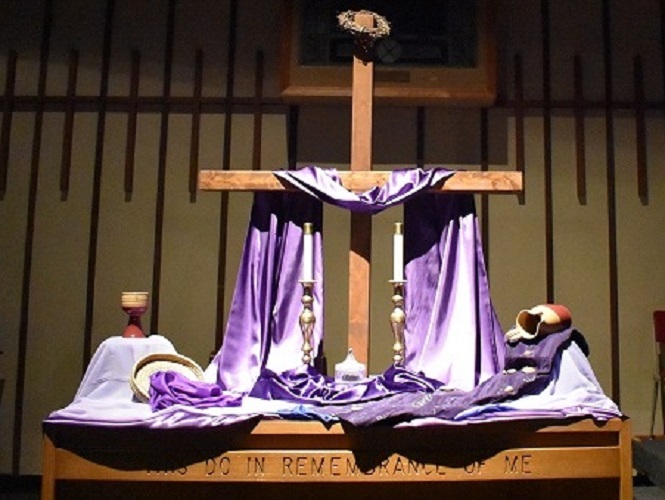Lent is a season of the church year that lasts 40 days. It begins on Ash Wednesday, and concludes on Easter. The Sundays in Lent are not counted, as they are all little Easters – celebrations of the resurrection of Christ. This season is considered to be penitential, contemplative, and preparatory. Often people will fast, devote themselves to prayer, or give something up as a part of their Lenten journey.
The liturgical color for Lent is purple.
Read more about Lent here.

An excerpt from the Companion to the Book of Common Worship (Geneva Press, 2003 110-111)
What we hear during Lent is the power and possibility of the paschal mystery, and that the way of the cross, the way to Easter, is through death. To appropriate the new life that is beyond the power of death means we must die with Christ who was raised for us. To live for Christ, we must die with him. New life requires a daily surrendering of the old life, letting go of the present order, so that we may embrace the new humanity. “I die every day!” asserts Paul (1 Corinthians 15:31). Resurrection necessitates death as a preceding act. The church’s peculiar Lenten claim is that in dying we live, that all who are baptized into Christ are baptized into his death. To be raised with Christ means one must also die with Christ. In order to embrace the resurrection, we must experience the passion of Jesus. The way of the cross, the way to Easter, is through death of the “old self.” In dying, we live.
Therefore, at the beginning of Lent, we are reminded that our possessions, our rulers, our empires, our projects, our families and even our lives do not last forever. “You are dust, and to dust you shall return” (Genesis 3:19). The liturgies throughout Lent try to pry loose our fingers, one by one, from presumed securities and plunge us into unknown baptismal waters, waters that turn out to be not only our death tomb but surprisingly our womb of life. Rather than falling back into nothingness, we fall back on everlasting arms. Death? How can we fear what we have already undergone in baptism?
It is the power of the resurrection on the horizon ahead that draws us into repentance toward the cross and tomb. Through the intervention of God’s gracious resurrection, lifelong changes in our values and behavior become possible. By turning from the end of the “old self” in us, Lenten repentance makes it possible for us to affirm joyfully, “Death is no more!” and to aim toward the landscape of the new age. Faithfully adhering to the Lenten journey of “prayer, fasting and almsgiving” leads to the destination of Easter.
During the final week, Holy Week, we hear the fullness of Christ’s passion, his death, and resurrection. From Jesus’ triumphal entry into Jerusalem and on to the Triduum (Maundy Thursday, Good Friday and Holy Saturday), all of Holy Week focuses on the passion. As his followers, we travel Christ’s path of servanthood through the Lord’s Supper and the suffering of the cross toward the glory of Easter, all of which underscores the inseparable link between the death and resurrection of Jesus.
